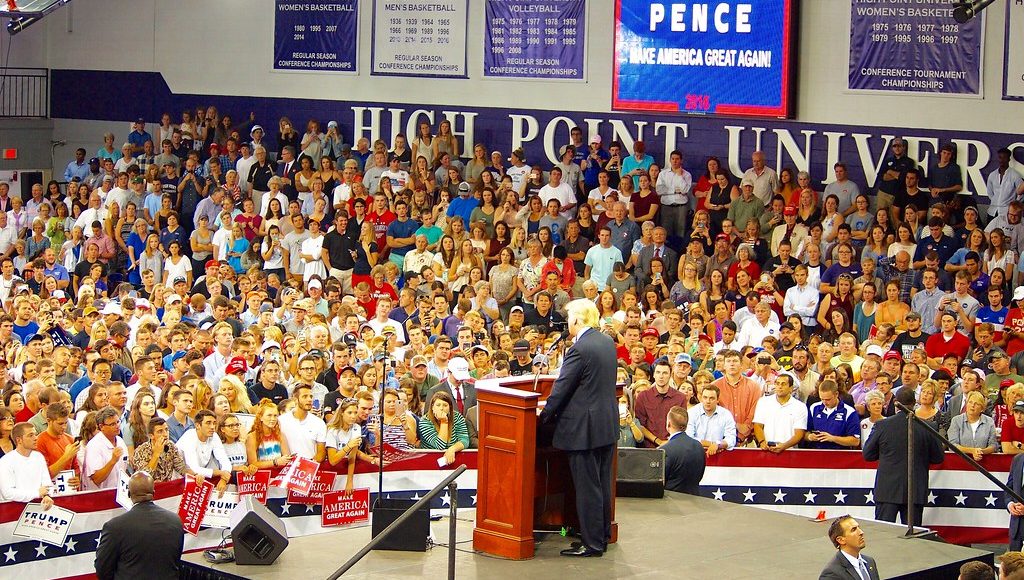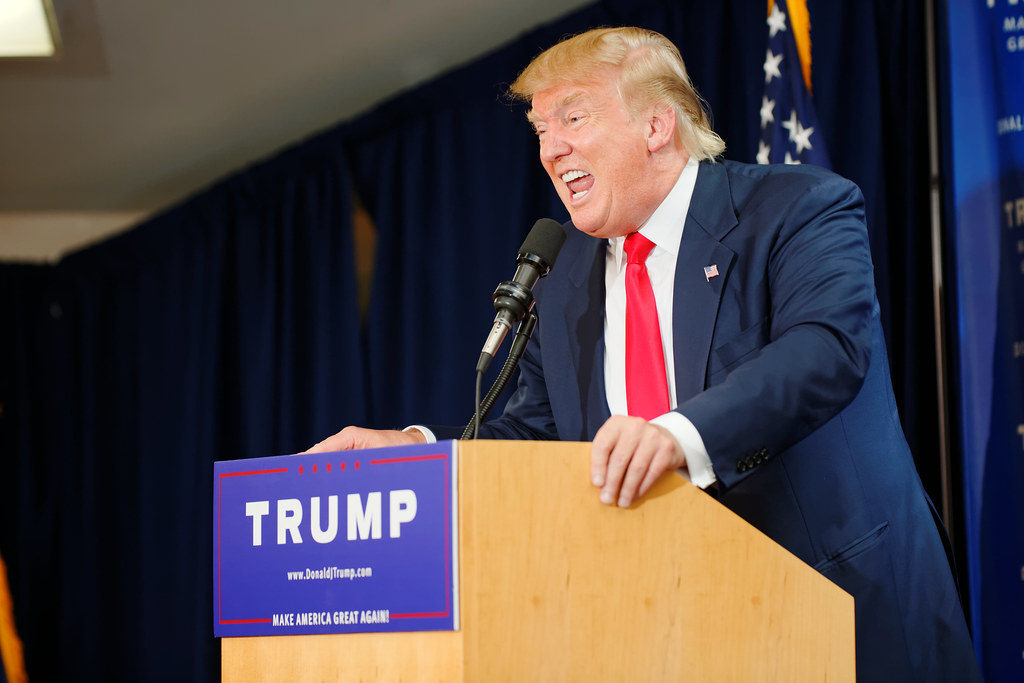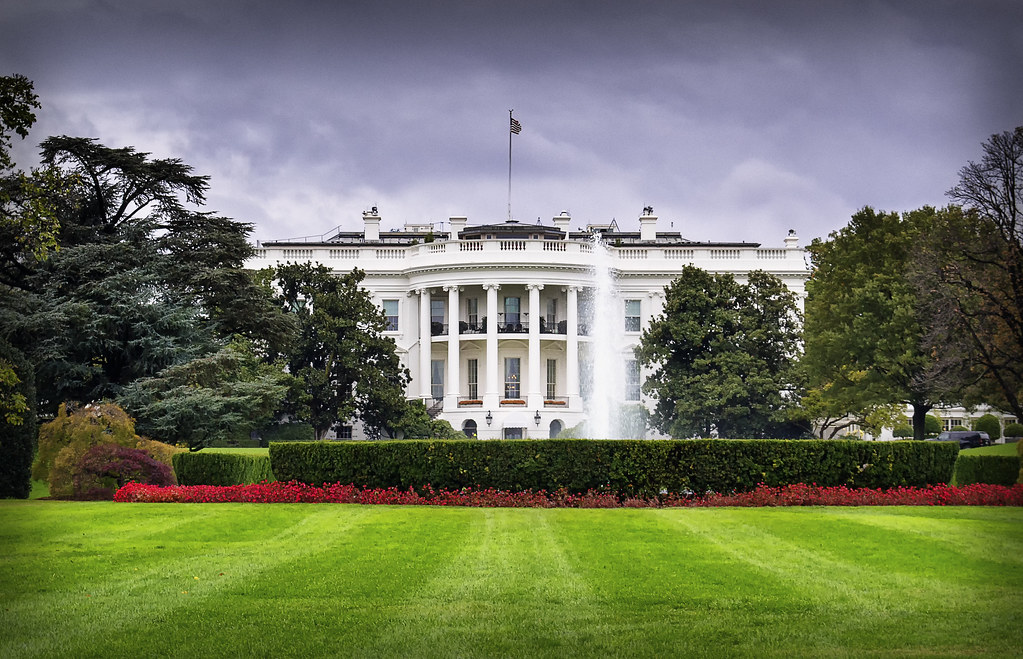Twitter Toxicity: The Dangers of Mixing the Presidency with Social Media

Disclaimer: In the following article a quote by a U.S. Congresswoman is cited in which she uses profane language.
As discovered through a hearty amount of scrolling, President Donald Trump’s tweet and retweet total for November 5th, 2019 came to a solid 27 tweets, a fairly average amount for a president that, in his first year in office, spent at least 40 hours tweeting. A typical tweet, such as following one from November 6th, supposedly displays the president’s “humorous” side:
Stock Markets (all three) hit another ALL TIME & HISTORIC HIGH yesterday! You are sooo lucky to have me as your President (just kidding!). Spend your money well!
— Donald J. Trump (@realDonaldTrump) November 6, 2019
A jocular 2017 tweet from President Trump.
While a little boasting and joking may seem as innocent as a chatty aunt’s text messages, this type of commentary has become common-place from the man who leads the United States. Although most Americans are now used to Trump’s new, and often vitriolic, form of communication, one might ask if this should really be the place and the method with which the leader of the free world airs his, often controversial, thoughts and ideas. While Twitter may be a place in which political discussion can occur, that doesn’t mean it should be the place for decisions to be made, announced, and discussed in the way that Trump’s “Twitter Presidency” has done.
Now, nearly three years into Trump’s presidency, many may be wondering how the country has gotten to this point. How did Trump and Twitter become so interconnected? Indeed, Twitter was integral to Trump’s tactics even before he was elected. In fact, his early tweets immediately suggested that Twitter would serve as a platform for his political commentary, such as this comment from March 6th, 2016:
How do you fight millions of dollars of fraudulent commercials pushing for crooked politicians? I will be using Facebook & Twitter. Watch!
— Donald J. Trump (@realDonaldTrump) March 7, 2016
Twitter has long been used by Trump to declaim against his opponents.
According to a November New York Times article, Trump has depended on Twitter heavily in order to get the word out about his political missives, tweeting 1,159 times about immigration and 521 times about tariffs over the course of his presidency, both of which are important items on his agenda. Moreover, with easy access to his iPhone—from which he tweets the majority of the time—quick, reactionary attacks on opponents are both attention-grabbing and gratifying, as can be seen from Trump’s 1,150 Twitter attacks during his first year as president.
Dan Scavino Jr., Trump’s social media director, also plays a critical role in Trump’s Twitter dependency, as he approves and helps draft many of the president’s tweets while also reassuring him of the public’s approval on various matters. One of the few remaining staff members of the original Trump campaign, Scavino’s sycophantic actions have not only given him considerable influence in the White House but they have also enclosed the president into a Twitter echo chamber that results in heavy distortions of the truth.
Trump’s distorted views have materialized in different ways and regard different topics and themes. For one, they seem to have perverted the president’s views of himself and his success. Trump’s creatively capitalized tweet on November 5th, for example, highlights his “95% Approval Rating in the Republican Party,” which, according to a Gallup Poll, is false. Although his job approval by the Republican Party is high, polling at 89%, the inflated statistics—broadcasted to Trump’s 66.7 million followers—only add to the “fake news” phenomenon that has plagued the media, voters, and public since Trump came into office.
Despite Twitter’s increasing prevalence as a mode of political communication, its popularity and use call into question whether the platform was really created for this purpose. According to their “About Page,” Twitter claims to show “What’s happening in the world and what people are talking about right now” and positions themselves as a place of “intersectionality, culture, and diversity.” If this is Twitter’s culture, President Trump seems to have wholly disregarded it in his thousands of attack-tweets, some of which are particularly sexist and racist. Take, for example, Trump’s July 14th tweets against Democratic Congresswomen of color, telling them to “go back and help fix the totally broken and crime infested places from which they came,” rhetoric which perpetuates xenophobic, racist, and sexist ideologies among an audience of millions. In addition to the harm done by the tweet itself, these harmful views and beliefs often internalized by his supporters and perpetually repeated, creating dangerous and divisive us-vs.-them bubbles.
….and viciously telling the people of the United States, the greatest and most powerful Nation on earth, how our government is to be run. Why don’t they go back and help fix the totally broken and crime infested places from which they came. Then come back and show us how….
— Donald J. Trump (@realDonaldTrump) July 14, 2019
While this series of tweets caused severe backlash this year, Trump did not back down.
Within these bubbles, particularly through the power of the “follow” and “unfollow” buttons, the filtered content that arises can lead to noxiously redundant feeds, consisting of endless loops of validation and misinformation. Fox News’ Tucker Carlson, one of the 47 people that Trump follows, posted a link on his Twitter to an article where he claimed that Rep. Ilhan Omar was a “grievance monger” and a “professional victim,” seemingly echoing Trump’s divisive and offensive language. Furthermore, a number of Trump’s more overtly racist tweets received particular praise from white supremacist groups, and Trump himself has retweeted at least 145 unverified twitter accounts that promote conspiracy theories and extremist content. By following and retweeting people on Twitter who espouse similar, or more extreme, thoughts, the president has limited the availability of alternative views and sources and has legitimized fringe groups and ideologies, especially those that target minorities.
In addition to mimicry among his supporters, Trump’s harsh language, both on Twitter and in real life, seems to have compelled politicians on both sides of the aisle to also mirror his brash vocabulary, such as when Rashida Tlaib, shortly after being sworn into Congress, said “We’re going to impeach the motherf**ker,” referring to the president.” While American political culture has never been known for its civility, Trump’s profanity seems to have increased the prevalence and popularity of polarizing and unfiltered language.

Not only are Trump’s tweets oftentimes crude, but they are also frequently full of grammatical errors. While some have argued that his errors should be ignored and the focus should be on the policies, it is difficult to separate (and comprehend) the two when his tweets are so often plagued with syntax and grammatical errors. On December 17th, 2016, for example, Trump described the Chinese seizure of a US Navy drone as an “unpresidented” act, illustrating the president’s impulsivity and blatant disregard for formalities, seemingly failing to take the time or care to proofread the tweet.
In addition to frequent misspellings, Trump also employs an incredibly limited vocabulary when it comes to his tweets, regularly repeating simplistic words to describe his relationships and actions. While this may be due to the 140-character constraint that Twitter imposes, it also shows a lack of consideration for the office of the president. Whether it is foreign policy, defending himself against personal attacks, or otherwise, Trump treats his spelling and grammar on Twitter with the same unconcerned attitude as he does in-person. When serious political missives are released via the syntactically relaxed atmosphere of Twitter, it degrades and jeopardizes the value of the messages; not only do the messages become more difficult to understand, but they also are not taken as seriously by mainstream media.

President Trump’s use of Twitter also poses a considerable threat to the realm of free speech. It is no secret that Trump has repeatedly blocked people on Twitter simply for disagreeing with his point of view. In one instance, Trump’s intolerance for difference was brought to court to determine whether his Twitter “blockings” were unconstitutional. The New York district court ruled against the president, stating that his “blockings” violated the first amendment, although the Department of Justice has openly disagreed with the decision. Trump’s inability to handle a few dissenters is sadly representative of his informality in international diplomacy, such as when he name-called Canadian prime minister Justin Trudeau after the 2018 G7 summit, ultimately leaving the event early and unproductively.
Nevertheless, it is undeniable that Twitter has become crucial to Trump’s political strategy and nearly ubiquitous in any politicians’ campaign. The social media platform is widely accessible via mobile phones and the Internet, especially to people who may not be able to afford televisions or subscriptions to news sources. Because of this more people can keep themselves updated on the political actions and announcements of their leader. While the accessibility of the site is appealing, how much can really be communicated in a 140-character box? Apparently, not very much: The New York Times’ “Fact Checks” section released Trump-centered articles almost weekly, involving far more in-depth research than what can be explained through tweets, frequently pointing out Trump’s gaffes and incorrect statements.
Although Donald Trump has a clear soft spot for Twitter, this dependency does not appear to be in everyone’s best interests. Trump, a prolific tweeter since the creation of his account in 2009, enjoyed regular use of the platform up until his election, but his continuance post-inauguration seems to degrade the office that he serves. While disregarding spelling, grammar, and general syntax, Trump also spreads false claims that reverberate throughout the American government and public, contributing to a chaotic situation that paints his presidency in a comical, if not slightly mortifying, light. This is not to say that presidents should not use Twitter, but rather that he, and his administration, should approach social media with the same caution and preparation they would for any other aspect of the presidency.
The feature image “Donald Trump High Point, NC 9 20 2016” by MarkGregory007 is licensed under CC BY-NC-SA 2.0.
Edited by Angello Alcázar
